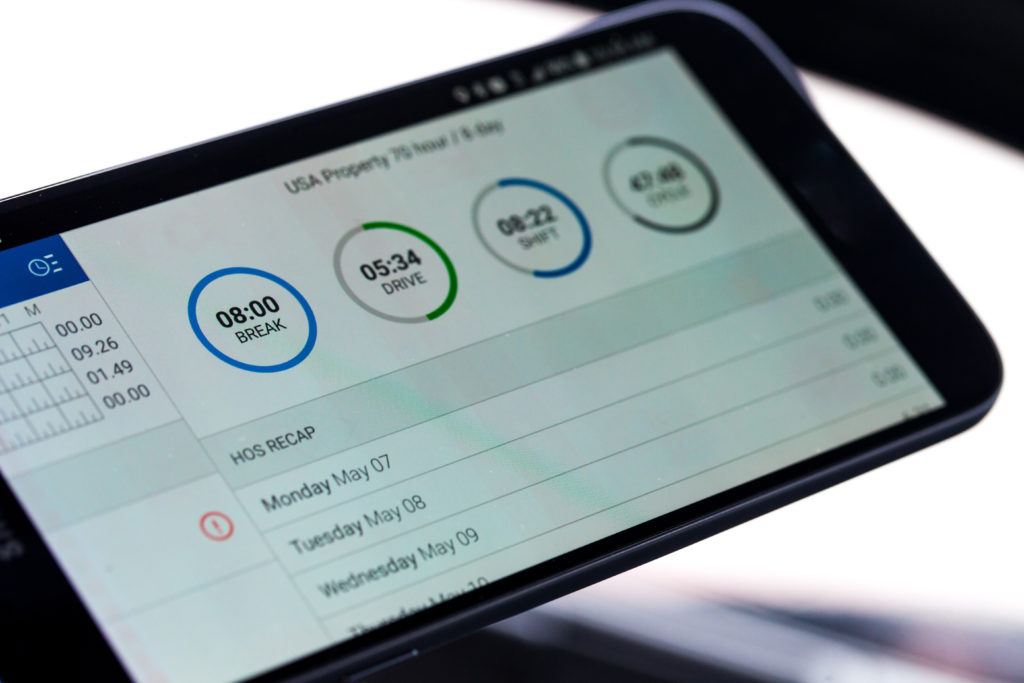
As the trucking industry adapts to recent hours-of-service regulation changes which became official at the end of September, the Federal Motor Carrier Safety Administration has released a virtual tool aiming to help industry members fully understand the new rules.
The final hours-of-service rule was announced by former acting Administrator Jim Mullen, along with Transportation Secretary Elaine Chao, on May 14th and consisted of four revisions the FMCSA says align with the biggest concerns they’ve heard from truckers. These revisions include changes to the 30-minute mandatory rest break, sleeper berth time splits, and maximum on-duty driving times.
“New hours-of-service rules now in effect!” said FMCSA in a tweet. “FMCSA has built an online education tool for hours of service to help drivers and carriers understand the new rules.”
With the new Educational Tool for Hours of Service (ETHOS), users are able to input their duty statuses into a digital logging system and see potential regulation violations.
“September 29th is an important day for our nation’s commercial drivers–the start of the revised hours-of-service rules providing greater flexibility to drivers and carriers without impacting safety,” said Wiley Deck, FMCSA Deputy Administrator. “Our team has worked hard preparing for this launch. [ETHOS] is a prime example of that effort. Its simple, scenario-based system is user-friendly and very helpful, particularly given the uniqueness of runs and drivers situations.”
Industry representatives having a firm grasp of the new rules is of the utmost importance, and this tool is going to be a huge help in that regard, said American Trucking Associations vice president of safety policy, Dan Horvath.
“The more educational materials FMCSA can provide to safety directors [and] to drivers, the better, because folks are going to be on the same page as far as understanding the new hours-of-service rules and complying with them,” Horvath explained. “Unfortunately, as we’ve seen with past rule-making, there’s always some gray area that exists with confusion when there’s any rule change, whether it be hours of service, [or] whether it be any regulatory rule-making changes.”
With ETHOS, a user can enter the day, time, and type of event he or she wishes to examine against the rule changes, including both driving and off-duty occurrences. Then, the user can select a pre-populated example prepared with the rule revisions in place–such as driving window times, rest break requirements, or sleeper berth provisions. Then, ETHOS can give a Record of Duty Status regarding the given information that reflects the intervals of time spent on-duty, off-duty, driving, or resting. Finally, potential violations are listed occurring to the day and time they may have taken place.
According to Horvath, this kind of helpful visualization tool will play a huge part in helping trucking industry members better understand hours of service rules. Truck drivers, dispatchers, safety directors, and employers can create a “mock duty day” on ETHOS if they are used to looking at logbooks or electronic logging devices each day.
“That [method] is often a very easy way to understand the hours-of-service rules as compared to providing a driver with regulatory text and saying, ‘Here’s what you can and cannot do,’” said Horvath. “When you take that regulatory text and put it in the context of an actual logbook for that driver’s day, it’s a lot easier to understand, it’s a lot easier to train, and that way, everyone’s on the same page.”
Horvath also notes that because the ETHOS’ system is based on what industry members use in their usual day-to-day responsibilities, it is incredibly user-friendly.
“Having an example of something that drivers and safety directors are using on a daily basis is going to be much more beneficial to the industry in understanding it,” he said.
ETHOS is meant to be a helpful educational and visualization tool for truckers and safety directors, and will only find the potential violations at hand in a given situation. It is not meant to monitor overall hours-of-service rule compliance, according to the online tool’s website. FMCSA also will not retain any data entered within ETHOS.
To find more information regarding ETHOS and to begin using it, click here.
Reader Interactions